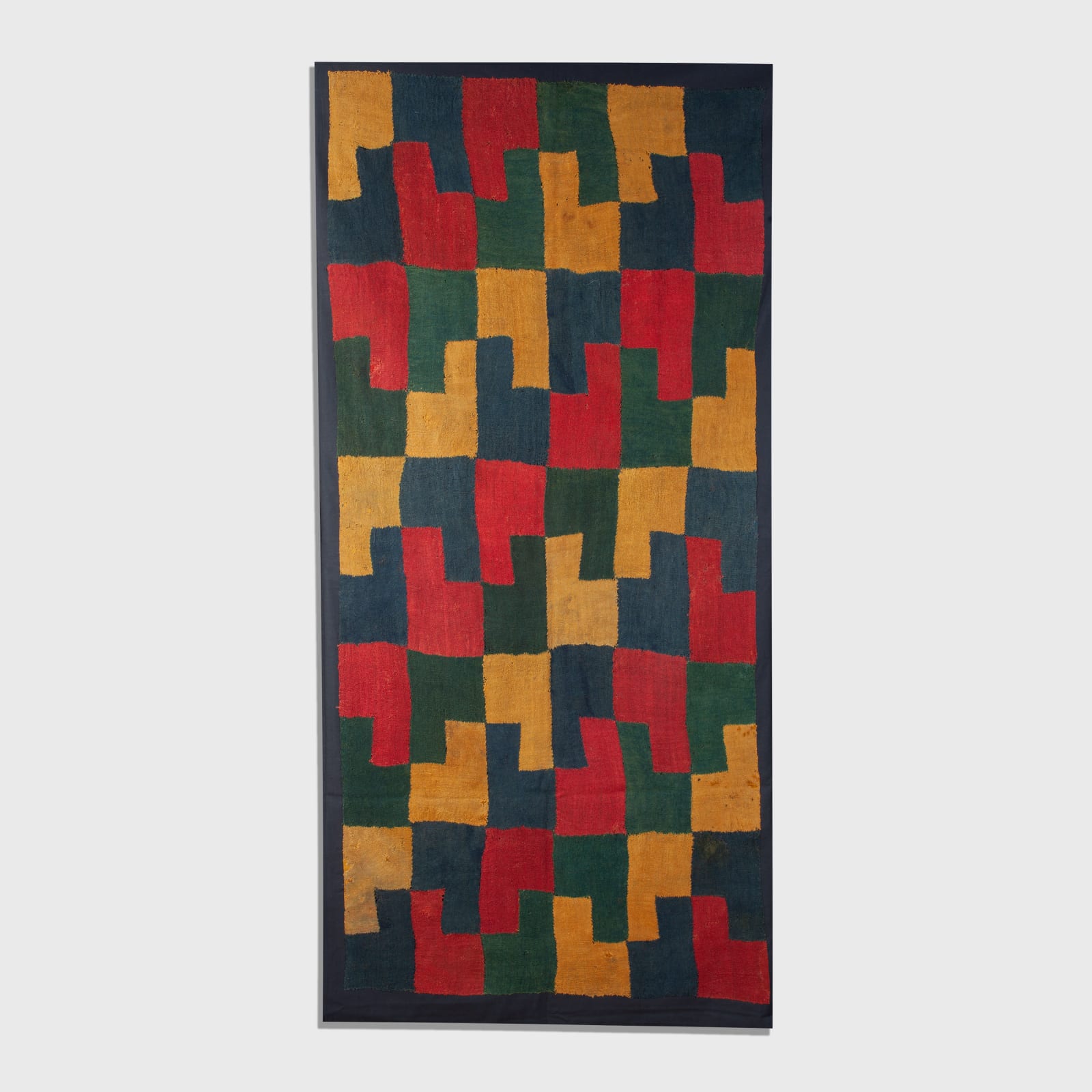Nazca Culture 100 BC-800 AD
This striking textile is distinguished by its abstract design composed of interlocking right-angled motifs arranged in a rhythmic and impeccably balanced composition. The angular forms are orchestrated with precision, creating a dialogue of opposing colors and directional shifts that generate a controlled yet vibrant visual dynamism. This sophisticated interplay of form and chromatic contrast is emblematic of the ceremonial textiles produced by cultures along the southern coast of Peru, particularly within the Nazca tradition.
Woven from multicolored camelid fibers—likely derived from alpacas or llamas—the textile is notable for its dense and highly regular weave, a testament to the weaver’s technical mastery and intimate understanding of complex patterning. The consistency of the weave and the clarity of the design reflect a high degree of planning, as well as the use of advanced techniques passed down through generations.
This type of textile was most likely intended to be worn as a mantle or used in ritual contexts, where its symbolic and visual power would have been fully appreciated. Textiles held profound cultural significance in ancient Andean societies, serving not only as garments but also as markers of identity, status, and cosmological belief. The interlocking right-angle motifs seen here are characteristic of an abstract iconographic language used throughout the Nazca sphere, one that conveyed layered symbolic meanings.
Though the exact interpretation of these motifs remains a matter of scholarly debate, their precision and repetition suggest associations with cosmogonic principles, such as duality, transformation, and the structuring of space. They may also reference systems of political or spiritual authority, encoding messages about hierarchy, lineage, or ritual performance within the geometry of the cloth.
Far more than a utilitarian object, this textile embodies the aesthetic and intellectual sophistication of its makers. It stands as a vivid example of how pre-Columbian Andean cultures embedded meaning, identity, and worldview into the very fabric of their ceremonial lives.
Join our mailing list
* denotes required fields
We will process the personal data you have supplied in accordance with our privacy policy (available on request). You can unsubscribe or change your preferences at any time by clicking the link in our emails.
